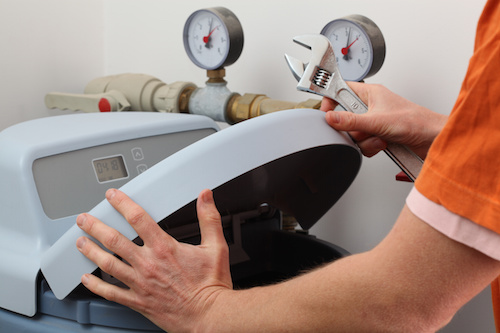 (412) 364-9114
(412) 364-9114

So, you have a water softener. You don’t know much about the way your water softener works but you’re pretty sure it needs salt in order to function and for some reason, the salt isn’t getting used. The softener seems to be running, but your water is hard and the salt is still sitting in the tank. What could be the problem?
A salt bridge is the most likely cause. This is what happens when the salt on top bonds together and forms a stiff crust that sits above the water level. The water in the softener can cycle, but it’s not mixing with the salt. When this happens, there’s usually a cavity of air between the top of the water and the bottom of the salt. You can see a diagram of this problem here.
You can fix the immediate problem by taking a broom handle and pushing gently on the salt. The salt bridge will crumble under the pressure and fall back into the water. Stir up the water a bit and break up any remaining large pieces. Do not push hard with the broom handle, and do not use anything sharp (like awl or an ice chipper) to break up the salt, because you could end up puncturing your tank. Below we’ve posted a simple and entertaining video about the salt bridge problem.
The salt bridge problem could be an isolated incident, but there’s a good chance that it will happen again if you don’t correct the conditions that made the salt bridge possible in the first place. The most common reasons that salt bridges form include:
High humidity can cause the salt in your tank to clump in the same way that salt clumps in a salt shaker. Unfortunately, high humidity could be a result of conditions that are difficult to fix. For example, if the water softener is located in a moist basement where dampness is a chronic problem, correcting the problem may take a lot of effort.
Overfilling the tank leaves a layer of dry salt at the top to clump and stick to the sides of the unit. Keeping the tank half full will help.
Evaporated salt is the purest salt available, and it’s the most efficient type of salt for your water softener. Using better quality salt will help the unit run more efficiently and use up the salt more effectively. Switch to this type of salt if you aren’t using it already.
If a salt bridge isn’t the problem and breaking up the salt doesn’t fix it, it may be time to call a plumber. If you live the Pittsburgh area, call Terry’s Plumbing. We’re happy to help out and we’re available to talk 7 days per week.